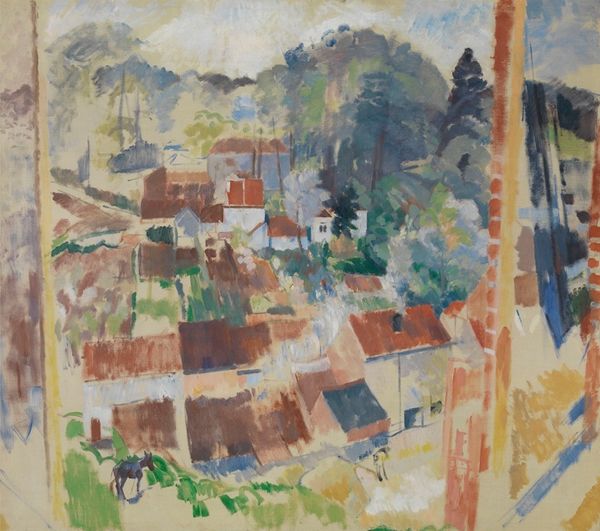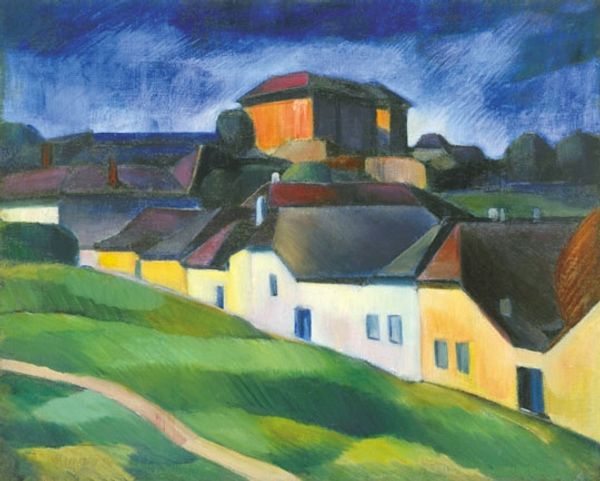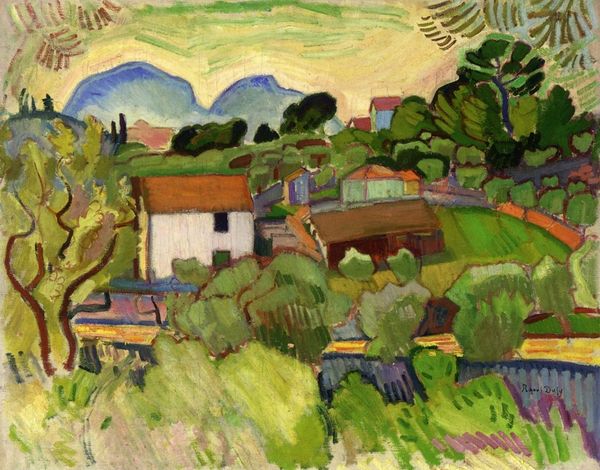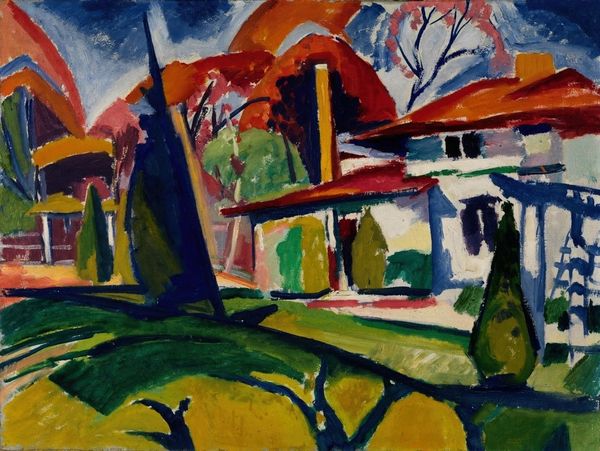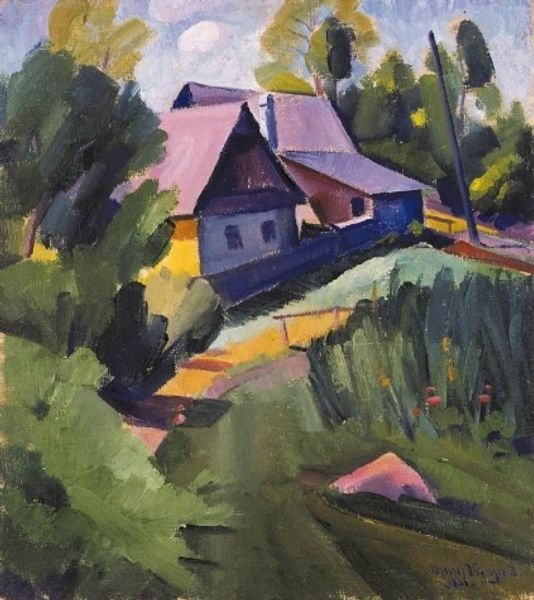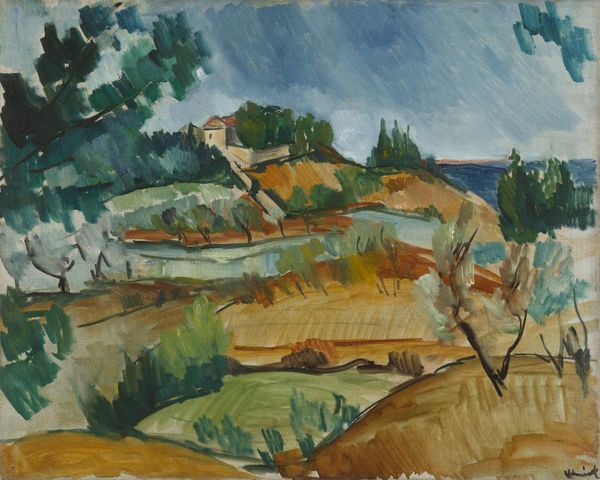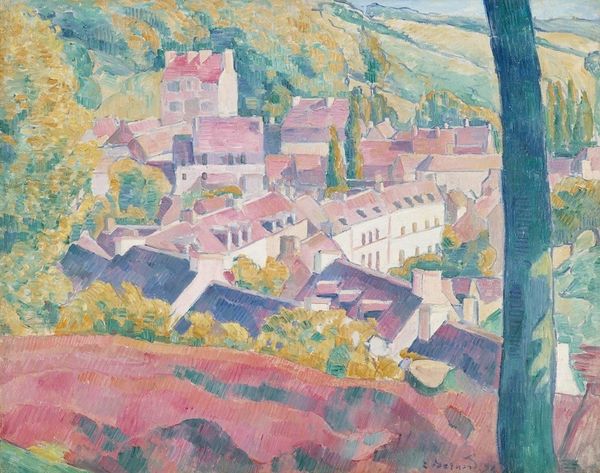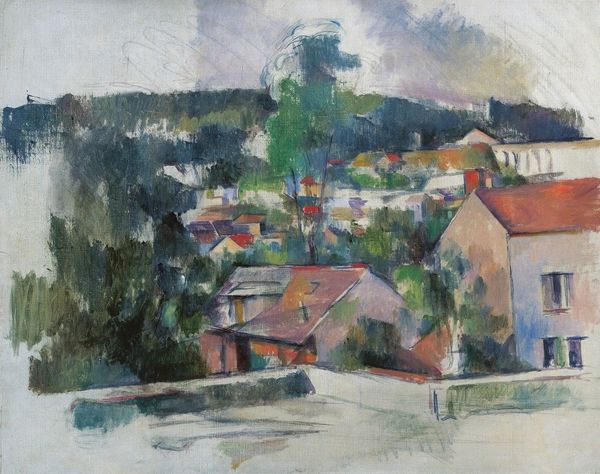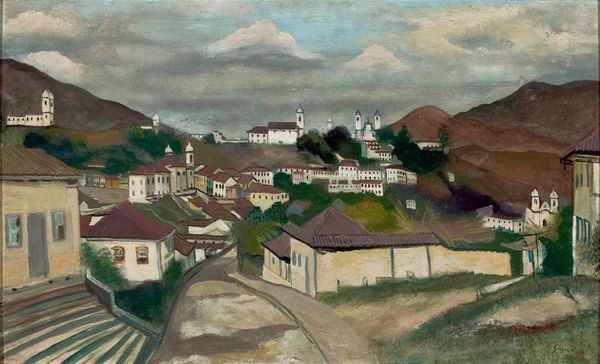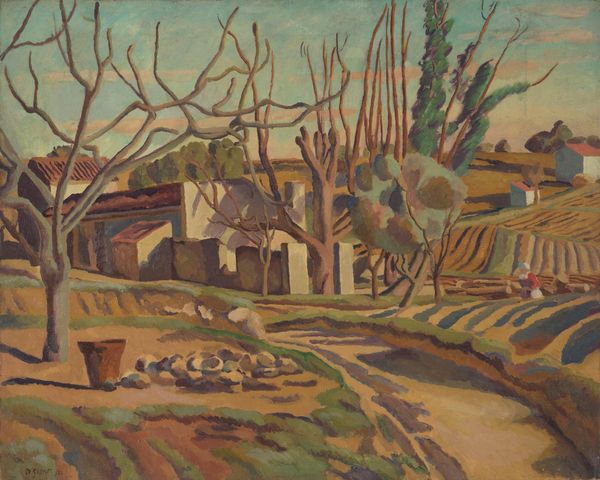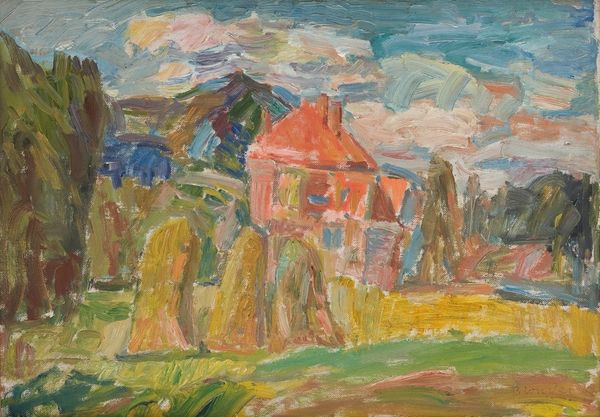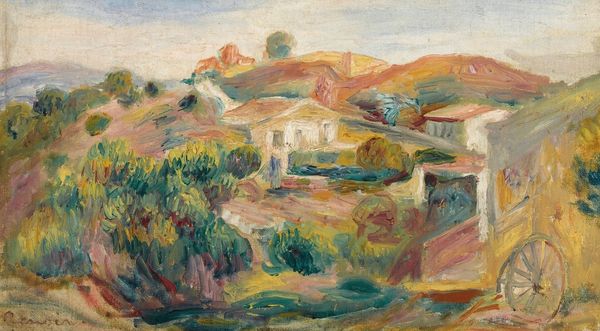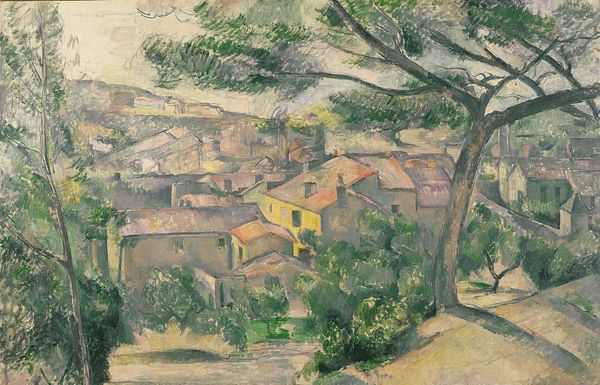
Dimensions: 205 mm (height) x 266 mm (width) (bladmaal)
Curator: Let’s look closely at Othon Friesz's "Udsigt mod en landsby" or "View Towards a Village," made sometime between 1923 and 1926. Friesz used oil paint, and the canvas currently resides at the SMK in Copenhagen. Editor: The first thing that strikes me is the vibrancy of the color palette, especially for a landscape. There's a roughness in the application of paint that makes it feel very immediate. What can you tell me about how the materiality of this piece connects with the social context of its creation? Curator: Consider the implications of oil paint here. While seemingly traditional, Friesz's Fauvist approach – the energetic brushstrokes, bold, unmodulated colors – flies in the face of academic conventions that valued a smooth, polished surface. This, in itself, speaks to a challenge of established social norms through the very means of production. Look at how he applies the pigment, not to realistically represent the landscape, but to almost build it anew with his own labor. Do you see how the thick impasto almost feels… industrial? Editor: Industrial? That's interesting. I was caught up in the vivid colors, but you’re right, the paint application feels almost like bricklaying. I suppose that makes sense given that Friesz was engaging with landscape painting, a genre historically tied to ideas of land ownership and labor. Curator: Exactly! Now think about what "village" meant in the 1920s - rural decline, the rise of cities. Friesz isn’t just passively depicting a scene, he's actively reconstructing it, bringing a modern sensibility to a traditional subject. Notice, for instance, the simplification of forms, almost like blueprints. What could that signify regarding Friesz's ideas of industry versus rurality? Editor: It suggests that industry is not necessarily separate from the countryside; it’s re-shaping and defining it, a total transformation through physical materials and their application, both the houses and landscape themselves rendered industrially through the handling of paint. I appreciate how your materialist perspective brought that out. It wasn’t visible for me before! Curator: Art offers endless ways to be seen when approached through new viewpoints. Let's investigate it again some time.
Comments
No comments
Be the first to comment and join the conversation on the ultimate creative platform.
